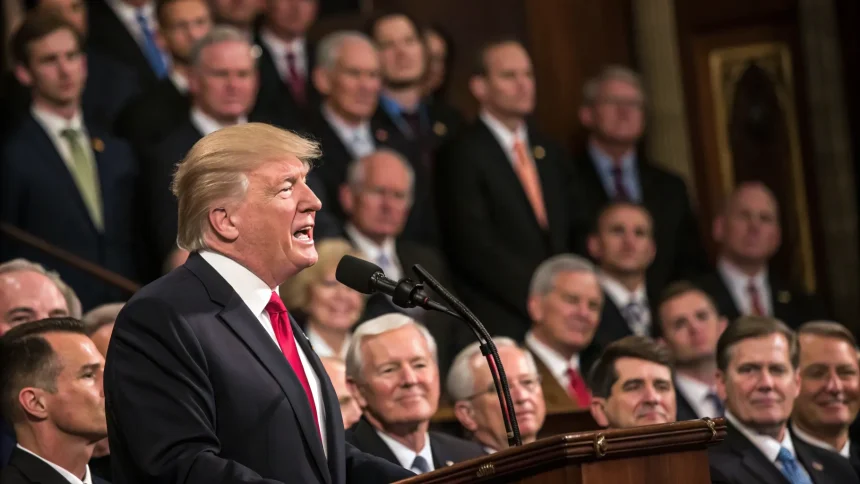President Donald Trump urged Senate Republicans to end the filibuster so they could pass a funding bill without Democratic support and reopen the federal government. The call came as a shutdown dragged on, with federal agencies curtailed and workers facing missed paychecks. The push aimed to let the Senate pass legislation with a simple majority rather than the usual 60 votes, escalating a long-running fight over Senate rules and minority rights.
Trump framed the move as a way to move past partisan gridlock and restore basic government services. The request placed immediate pressure on Senate Majority Leader Mitch McConnell and rank-and-file Republicans, many of whom have defended the filibuster for years. Democrats warned that ending the rule would erode the Senate’s role as a consensus-driven chamber and could boomerang against Republicans in a future Congress.
“President Trump is calling on the Senate to scrap the filibuster, so that the Republican majority can bypass Democrats and reopen the federal government.”
What Is at Stake
The shutdown halted or reduced operations at several federal departments and agencies. Hundreds of thousands of workers faced furloughs or worked without pay. Services slowed or stopped, from national parks to some administrative processing.
- Federal employees missed pay periods and relied on back pay promises.
- Contractors risked lost income not guaranteed to be repaid.
- Public services saw delays, with ripple effects for families and businesses.
Pressure built on both parties to strike a deal. The White House sought leverage. Democrats demanded policy concessions and spending details before agreeing to any bill.
How the Filibuster Works
The Senate filibuster is not in the Constitution. It evolved through Senate rules that allow extended debate. In practice, it sets a 60-vote threshold to end debate on most bills. That requirement forces bipartisan cooperation in a closely divided chamber.
Supporters say the filibuster protects minority views and encourages compromise. Critics argue it stifles action and lets a minority block bills with broad public support. The Senate already weakened the filibuster for nominations. Democrats changed the rule for most executive branch and lower-court nominations in 2013. Republicans later applied the same change to Supreme Court nominees in 2017.
Why the Push Now
Trump’s call addressed a basic math problem. Republicans held a simple majority, but not 60 votes. Without Democratic votes, the chamber could not move a funding bill under regular rules.
Ending the filibuster for legislation would let the majority pass a funding package with 51 votes. That could reopen agencies quickly. It would also let the majority advance other agenda items without minority buy-in.
Some Republicans have floated rule changes before, especially during high-pressure standoffs. Others warned of long-term costs. If the filibuster falls, the party out of power loses its main tool to influence bills.
Political and Policy Implications
Scrapping the filibuster would change how the Senate works. The chamber would look more like the House, where simple majorities rule. Speed could increase. So could swings in policy with each election.
Democrats argue that such a shift would invite dramatic policy reversals. Businesses and agencies could face frequent changes in rules and budgets. Advocates of ending the rule say voters deserve action, not stalemate. They point to repeated shutdowns and stalled bills as evidence that the system is failing.
Moderate senators from both parties have often defended the rule. They say it pushes lawmakers to negotiate. They worry that ending it in a moment of crisis would set a rule based on short-term needs rather than long-term stability.
Historical Precedents and Limits
Previous rule changes focused on nominations, not legislation. Extending the so-called “nuclear option” to bills would be a bigger break with Senate tradition. Rule changes typically require a supermajority. The majority can also set new precedents with a simple majority, but that move is controversial.
Leaders have often resisted making permanent changes during a standoff. They prefer to preserve leverage for future fights. Any move now would shape power dynamics for years.
What to Watch
Key questions will guide the next steps. Does the Senate majority have the votes to change the rule? Will moderates join or resist the move? Can both parties agree to a narrow funding deal that avoids a rules fight?
The shutdown’s pressure grows with each missed paycheck and service delay. Public opinion may push lawmakers toward a compromise or harden positions, depending on who is blamed.
For now, the President’s demand puts the filibuster back at the center of the debate. The decision will set the course for funding talks and the Senate’s future.
If the rule holds, negotiators will need a bipartisan path to reopen the government. If it falls, the majority can act quickly, but at a significant institutional cost. Either way, the standoff has revived a core question: Should the Senate prize speed, or stability built on compromise?







